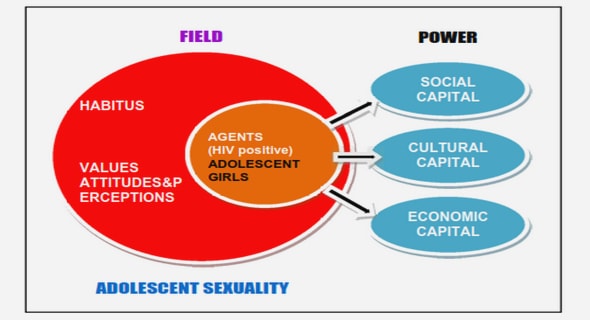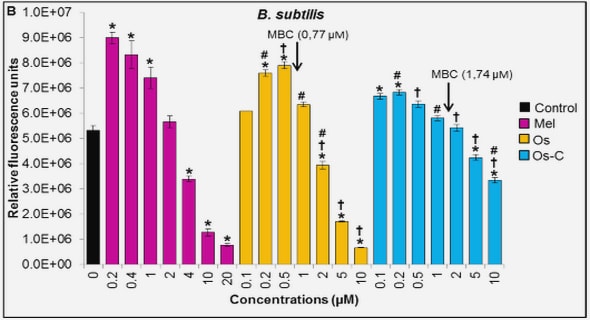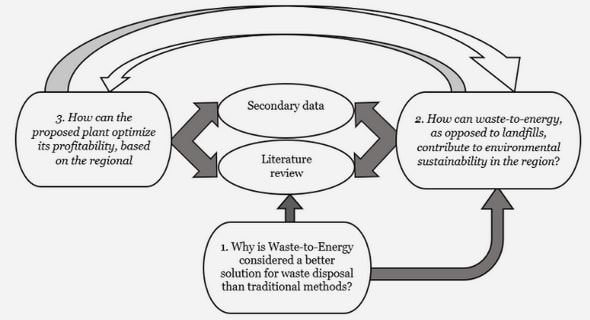Get Complete Project Material File(s) Now! »
Chapter Three: Engagement
As discussed in the previous chapter, it is important to understand how PYD programmes foster positive outcomes in youth and how they can successfully support youth in their transition to adulthood (Greene et al., 2013). Engagement has been suggested as a key mechanism associated with positive outcomes in PYD programmes (Chapman et al., 2017; Deane & Harré, 2014b; Weiss et al., 2005). Shernoff (2010) argues that engagement can help explain the link between participation in youth programmes and outcomes, and Pearce and Larson (2006) suggest that in order to advance the PYD field it is essential to develop a better understanding of the process of youth engagement in programme activities. In addition, Pearce and Larson (2011) believe that it is crucial to understand the process through which engagement develops to increase the likelihood that young people will receive the maximum benefits from PYD programmes.
Chapter Overview
Considering this, Chapter Three draws on literature regarding engagement in youth programmes to better understand this phenomenon. The chapter begins with a discussion of engagement in youth programming to demonstrate its importance. A discussion of how engagement is conceptualised in the current youth literature is then provided, which draws on the literature regarding educational engagement as well engagement in out-of-school contexts. The benefits of engagement are then identified, followed by a discussion of the engagement hierarchy, the process of engagement in youth programming and the trajectories of engagement. The chapter concludes with a discussion of the various ways engagement can be measured, including an outline of the challenges researchers face when attempting to measure engagement.
Engagement in Youth Programming
Brooks-Gunn and Roth (2014) argue that there is a need to further investigate the elements of PYD programmes that are important to outcomes, specifically acknowledging the relevance of engagement. Furthermore, a number of researchers argue that engagement is crucial for increasing outcomes in PYD programmes (Chapman et al., 2017; Deane & Harré, 2014b; Weiss et al., 2005). Weiss et al. (2005) have developed a participation equation that is contingent on engagement: Participation = enrolment + attendance + engagement. The authors suggest that without engagement, participants are not truly participating and are therefore unable to gain from programme experiences. The Ontario Centre of Excellence for Child and Youth Mental Health (2012) based in Canada, conducted a large-scale review on youth engagement focusing on individuals aged 12 to 19 years-old. They found a consistent pattern of association between youth engagement and well-being, specifically linking engagement with a sense of social commitment, self-worth and responsibility. Overall, there appears to be an agreement in the field regarding the importance of engagement in youth programmes, however there is insufficient knowledge regarding the process that leads to engagement (Ozer & Douglas, 2015). Indeed, Ozer and Douglas (2015) recognise the need to understand the processes behind engagement in youth programmes in order to advance the PYD field.
Conceptualising Engagement
Engagement is described as a connection between a person and an activity (Appleton, Christenson, Kim, & Reschly, 2006). It refers to a sustained, meaningful involvement in an activity (Pancer, Rose‐Krasnor, & Loiselle, 2002), and it is viewed as a multifaceted concept that is typically described as comprising of multiple components (Archambault & Dupéré, 2017). Not only is engagement multifaceted, but it is malleable, with scholars arguing that an individual cannot simply be labelled as ‘engaged’ or ‘disengaged’ due to intra-individual variation in engagement (Park, Holloway, Arendtsz, Bempechat, & Li, 2012). This flexibility is suggested to be due to individual responses to change in the environment (Fredricks et al., 2004). Together, the multifaceted and malleable nature of engagement illustrates the complexity of the construct and creates challenges for researchers attempting to understand it. Furthermore, there appears to be a lack of consensus in the literature regarding the specific components that constitute engagement (Ciric & Jovanovic, 2016). In today’s literature, a common conceptualisation of engagement is the inclusion of psychological and behavioural components (Appleton et al., 2006; McGuire & Gamble, 2006; Ramey et al., 2015). The psychological component has been further conceptualised to include cognitive and affective or emotional components (Fredricks et al., 2004), as well as a number of other constructs such as: enjoyment, interest, concentration, effort and challenge (Akiva, Sugar, Smith, & Brummet, 2011; Shernoff, 2010; Shernoff & Vandell, 2007). In general, the different conceptualisations of engagement in the literature appear to encompass similar notions albeit with different terminology (Haagenson Schlangen, 2016). This is illustrated in following section, which provides an outline of the terms commonly used to conceptualise engagement throughout the literature. There is an emphasis on behavioural, cognitive and emotional engagement as these dominate the current youth engagement literature (Archambault & Dupéré, 2017).
Behavioural engagement.
Behavioural engagement is the most commonly cited dimension of engagement (Lawson Lawson, 2013), and it is conceptualised as being separate to the multi-component concept of psychological engagement. Behavioural engagement refers to active participation and involvement in an activity with an emphasis on positive conduct (i.e., adhering to rules and norms; Grossman et al., 2009). Behavioural engagement encompasses the individual’s voluntary participation in an activity and efforts to perform a task (Appleton et al., 2006). While all participants may follow rules, those who show behavioural engagement will volunteer for tasks, contribute to discussions and ask relevant questions (Rosário et al., 2017). Behavioural engagement includes the absence of disruptive behaviours, such as getting into trouble through breaking rules and causing disturbance during an activity (Fredricks et al., 2004). Behavioural engagement has been further organised into two categories: academic and social (Barghaus et al., 2017). Academically, behavioural engagement can be defined through behaviours such as persistence and attentiveness when completing a task. Whereas socially, behavioural engagement can be defined as behaviours such as following rules and interacting appropriately with adults and peers (Finn & Zimmer, 2012). As behavioural engagement focuses on observable behaviours, it is often used when measuring engagement, predominantly through observational methods (Grossman et al., 2009).
Psychological engagement.
Psychological engagement is derived from several different facets. Shernoff (2010) conceptualises psychological engagement as concentration, interest and enjoyment. In their measure of psychological engagement, Gallant, Smale and Arai (2010) include enjoyment, social relations and perceptions of making a difference, and Greene et al. (2013) propose enjoyment, interest and challenge as indicators of psychological engagement. Ramey et al. (2015) conceptualise psychological engagement as cognitive, affective and relational, arguing that all the components are required to capture the holistic psychological experience in activities. In Ramey et al.’s model, cognitive engagement is described as an investment in learning, including a willingness to exert extra effort, self-regulation and purposefulness. Affective engagement is defined as positive and negative emotional reactions to an experience as well as perceived importance and value of the experience. Relational engagement refers to a focus outside of the self, to a feeling of connection with others, or to a goal beyond the self. Relational engagement is supported by findings from Akiva, Cortina, Eccles and Smith (2013) and Bundick (2011), who indicate that relatedness to others and meaningfulness are important aspects of a youth’s psychological engagement in activities. However, there is limited support for relational engagement as a separate component, with features identified to be indicators of relational engagement included in the commonly used conceptualisation of emotional engagement. Indeed, two of the most commonly cited aspects of psychological engagement are cognitive and emotional engagement (Archambault & Dupéré, 2017), hence these will be discussed in greater depth below.
Cognitive engagement.
Cognitive engagement is considered to be an important aspect of psychological engagement and is often used to conceptualise engagement in school settings (Fredricks et al., 2004) as well as in out-of-school youth programmes (Bohnert et al., 2010; Greene et al., 2013). Cognitive engagement is understood to represent a deeper level of engagement than behavioural engagement, and is comprised of an investment in learning, self-regulation and being strategic (Appleton et al., 2006). To cognitively engage is to have a willingness to use energy to advance skills and solve problems, resulting in performing tasks strategically and in a purposeful manner (Connell & Wellborn, 1991). When an individual is cognitively engaged, they often feel a sense of value in what they learn, encouraging them to go beyond the requirements for the task (Bohnert et al., 2010). They experience a quest for learning and they are focused on understanding the task with less concern with outcomes. As cognitive engagement is psychological, it involves less easily observable behaviours compared with behavioural engagement. Rather, it includes more internal indicators such as flexibility, effective coping with failure, perceived relevance of the task to future endeavours, value of learning and autonomy (Appleton et al., 2006). As can be seen, this description of cognitive engagement is similar to the cognitive dimension of psychological engagement described by Ramey et al. (2015). In addition, it includes a sense of focus, which is similar to concentration, as described in Shernoff’s (2010) conceptualisation of psychological engagement. Furthermore, having a willingness to advance skills to solve a problem suggests that challenge is involved, which is included in Greene et al.’s (2013) conceptualisation.
Chapter One: Introduction
Research Rationale
Project K
Organisational Outline of the Thesis
Chapter Two: Positive Youth Development
Chapter Overview
Defining Adolescence
Developmental Science and the Positive Youth Development Approach
Positive Youth Development in Aotearoa New Zealand
Project K evidence base
The current state of positive youth development in Aotearoa New Zealand
Indicators of Positive Youth Development
The Developmental Assets model
The Five C’s model of positive youth development
Positive Youth Development Programmes
Conceptualising positive youth development programmes
Features of effective positive youth development programmes
Outcomes of positive youth development programmes
Outdoor Adventure Youth Programmes
Defining outdoor adventure programmes
The key components for success in outdoor adventure programmes
Outdoor adventure programme process
Outcomes in outdoor adventure programmes
The ‘Black Box’ Problem of Outdoor Adventure Programmes
Chapter Summary
Chapter Three: Engagement
Chapter Overview
Engagement in Youth Programming
Conceptualising Engagement
Behavioural engagement
Psychological engagement
Disengagement
Differentiating engagement and motivation
Differentiating engagement and attendance
Benefits of Engagement
The Engagement Hierarchy
The Process of Engagement in Youth Programming
Trajectories of Engagement
Measuring Youth Engagement
Survey methods
Experience sampling methods
Observational methods
Challenges faced when measuring engagement
Chapter Summary
Chapter Four: Methodology
Chapter Overview
Project K
Project K’s governance and implementation
The wilderness adventure
Qualitative Methods in Positive Youth Development Research
Observational approaches in youth programming
Principles of ethnography in youth programmin
Method
Design: Immersive participant observation
Researcher’s position
Case selection
Sample
Procedure
Data Analysis
Conceptualising engagement and disengagement
Phase 1: Thematic analysis of the factors influencing engagement and disengagement
Phase 2: Constructing individual trajectories of engagement
Evaluating the quality of the research
Chapter Summary
Chapter Five: Themes of Engagement
Chapter Overview
Engagement
Nature of the activities and the environment
Peer support
Facilitator skills
Disengagement
Level of physical challenge
Negative social influence
Limited facilitator attunement
Cross-Case Comparisons
The factors that influenced engagement and disengagement in Case 1
The factors that influenced engagement and disengagement in Case 2
Chapter Summary
Chapter Six: Trajectories of Engagement
Chapter Overview
Trajectories of Engagement
Generally high engagement
Variable engagement
Increased engagement
Chapter Summary
Chapter Seven: Evaluation of Immersive Participant Observation
Chapter Overview
Benefits experienced using Immersive Participant Observation
Observing individual differences
Collecting data from different sources
Insights into programme operations
Challenges of using Immersive Participant Observation
Social isolation
The physical challenge
Overwhelming observations
The importance of the facilitators
Returning Home from the Field
Recommendations for Researchers using Immersive Participant Observation
Concluding Thoughts
Chapter Eight: Discussion
Chapter Overview
Contributions of the research for Project K
Insights into the Concept of Engagement
The process of disengagement
The hierarchy of engagement
The trajectories of engagement
Advancing Knowledge in Outdoor Adventure Programming
Methodological Advances: Immersive Participant Observation
Limitations
Opportunities for Future Research
Implications for Practice
Concluding thoughts
Appendices
GET THE COMPLETE PROJECT
An Innovative Exploration of Engagement using Participant Observation in an Outdoor Adventure Youth Development Programme


